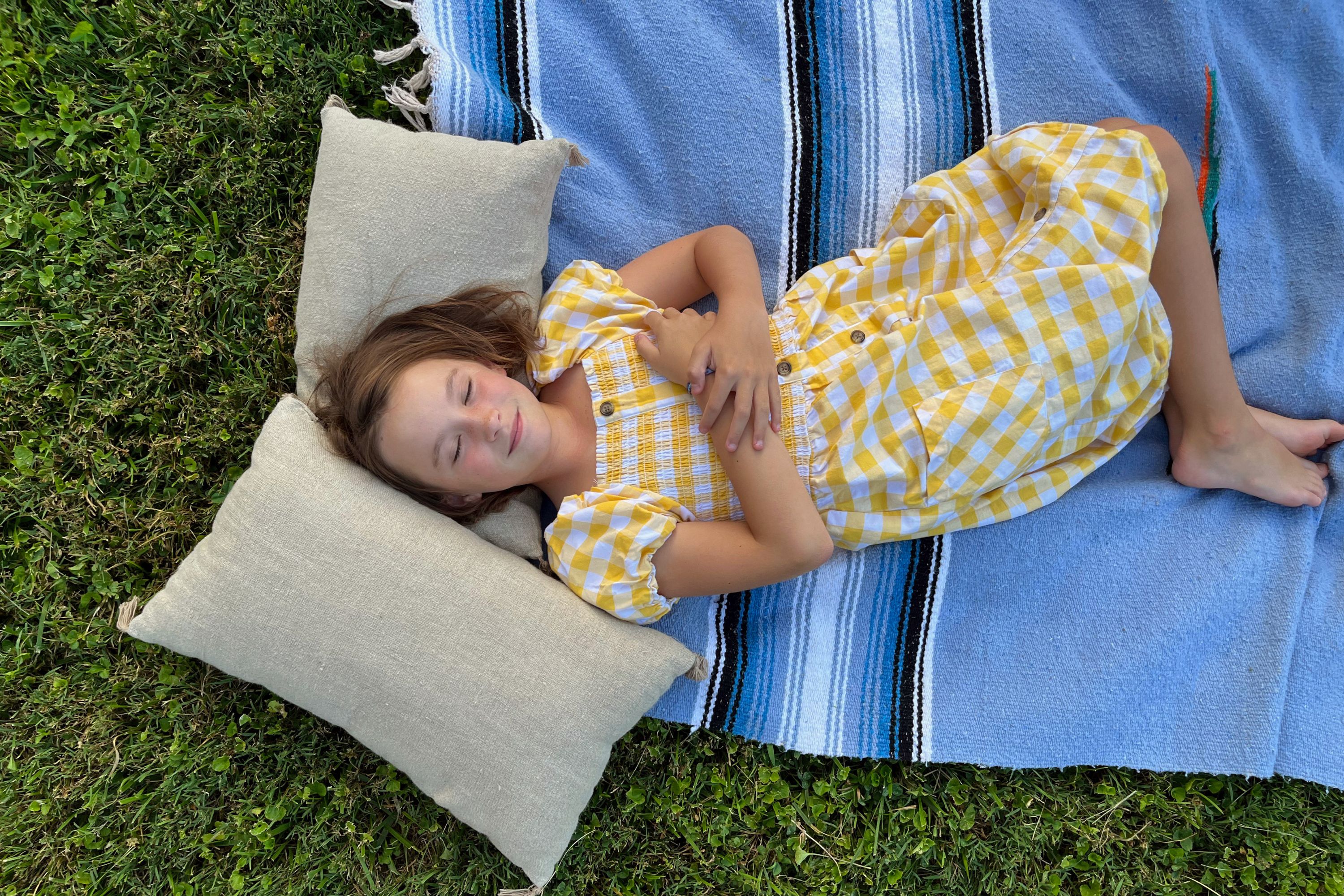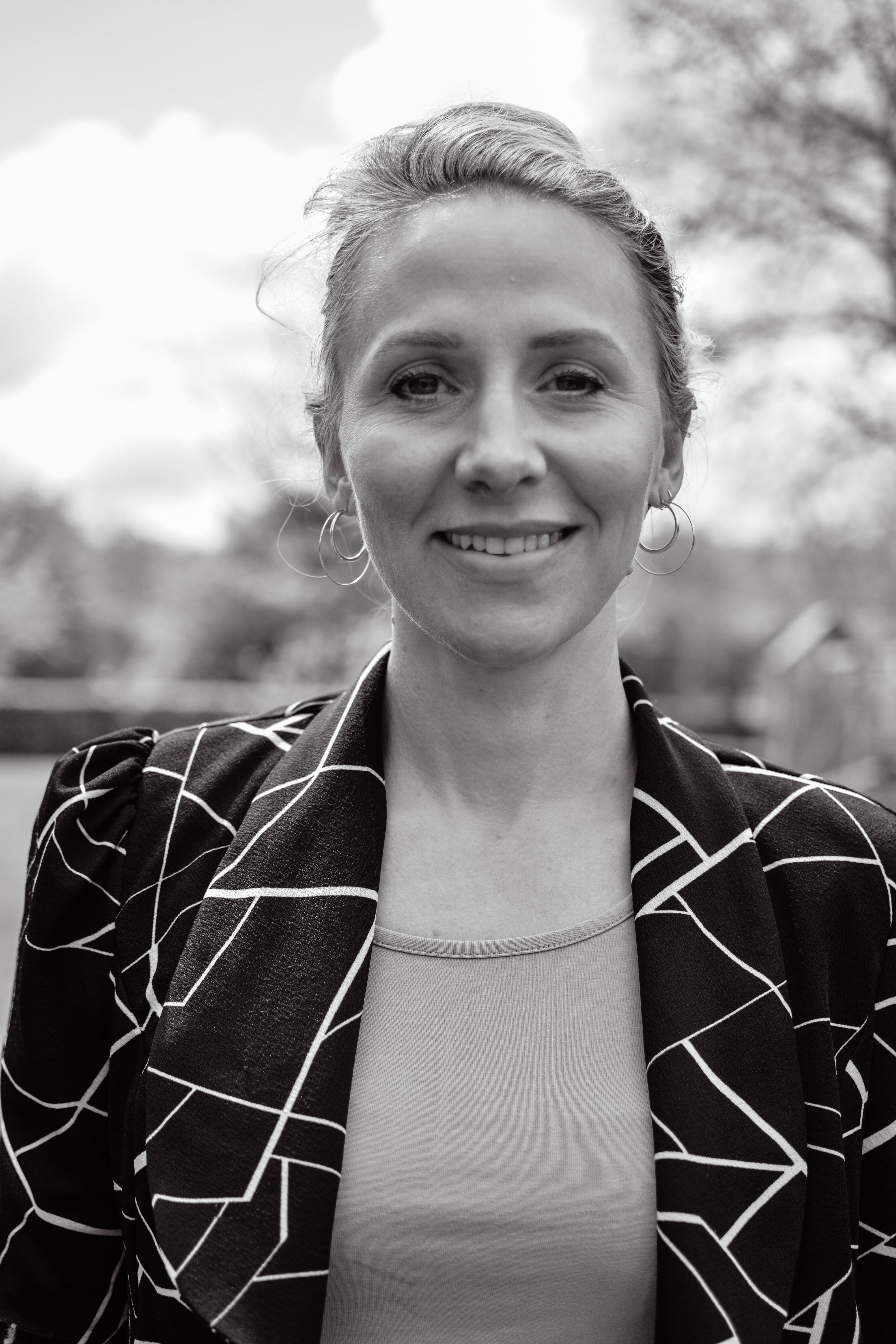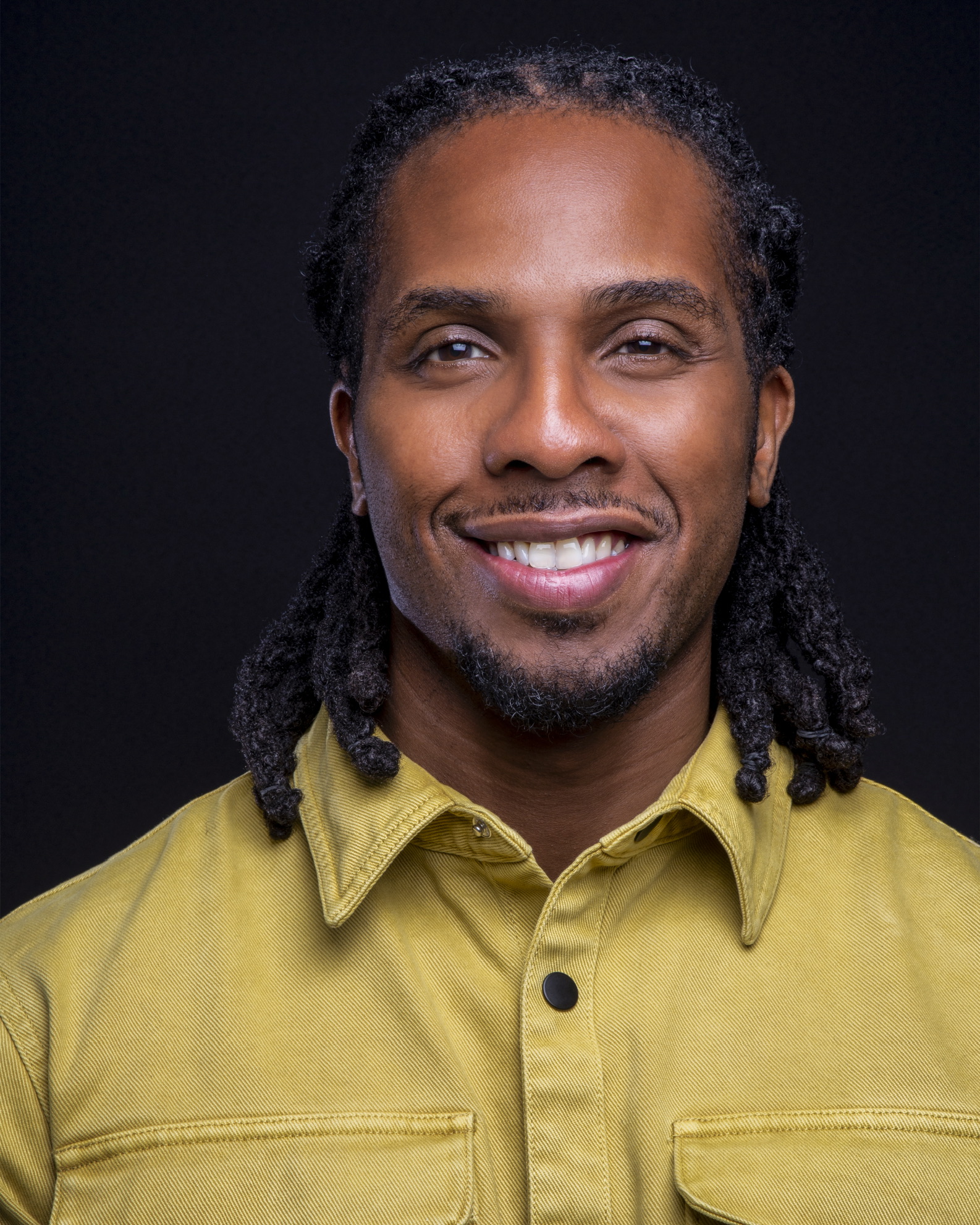10 easy mindfulness activities for kids
Try these simple activities to teach your kids mindfulness


Teaching your little ones these mindfulness activities for kids will help them learn how to manage their anxieties and understand their emotions from an early age.
The benefits of mindfulness are endless, from improving sleep and reducing stress to even lowering blood pressure and helping to manage depression. And while kids may not face the same daily pressures as us grown-ups, they can still feel anxious and stressed, which is why it's important to know how to talk about children's mental health and how to start a conversation about mental health with your kids. And one of the things that can help anxious kids to manage their emotions is by practicing mindfulness.
Lisa Bruton, psychotherapist and spokesperson for the UK Council for Psychotherapy (UKCP) explains, "Mindfulness activities are good to practice routinely and when children are fairly calm, as it means they will be familiar with the exercises if you ever need to call upon them to help children calm down, or relax before going to sleep, for instance." Read on to for our expert-approved list of things to do with kids that can teach them about mindfulness.
Mindfulness activities for kids
1. Belly breathing
Breathing is a big part of mindfulness, and studies have shown that it can reduce anxiety and increase positive thinking. However, the concept of mindful breathing might be difficult for kids to grasp, so you can teach them through belly breathing.
Lisa explains that they will need to either sit cross-legged or lie down on the floor, or sit on a chair with their eyes closed. Invite them to put their hands on the belly, and breathe slowly. Count to three as they breathe in, and again as they breathe out. Invite them to feel their belly rise and drop down again, and do this for two to three minutes.

Lisa says: "This is a really good one for children learning to count, and also for when children are particularly wound up and need something to concentrate on as they calm down. We know that slowing our breathing down kickstarts the para-sympathetic nervous system, which in turn lowers the levels of cortisol and adrenaline, and increases oxytocin."

Lisa Bruton is a Counselor and Psychotherapist with over 12 years experience. She works with individuals, couples and others wishing to improve their relationship. She runs a busy private practice in the center of Reading, and alongside this she is a Guest Tutor at the University of Oxford. She is a trained Mindfulness teacher and incorporates body-based approaches into her work.
2. Mindful eating
Mindful eating focuses on the experience of eating and, as Lisa explains, "this can be quite fun with children as you can play around with different foods, such as frozen peas, crackers, popcorn, and more."
Parenting advice, hot topics, best buys and family finance tips delivered straight to your inbox.
She adds, "Mindful eating can be useful especially to slow children's - and adults' - eating down and really pay attention to the food and levels of hunger and satiation."
Lisa suggests offering children something small to eat, like a raisin, a blueberry or a nut, and inviting them to put it in their palm. Ask them how it feels, what shapes and colors they can see and what they can smell, before asking them to place it on their tongue and explain how it feels.
When they bite into the food, ask them to concentrate on the flavors, chew until they swallow and feel it entering into the body.
Action for Healthy Kids explains, "Connecting this with the food that fuels our bodies helps children to recognize feelings of hunger and fullness, slow down when eating, better digest and fully enjoy snacks or meals."
3. Mindful walking
Walking meditation is another way of connecting to the present moment, and involves noticing the surroundings as you walk. Studies have shown that mindful walking can reduce stress.
Lisa says: "Invite the children to take their shoes and socks off, either inside on the carpet or floor, or outside on a patch of grass. They should stand up and play around with pressure on different areas of the feet, by leaning forward, backwards and to the side.
"Then begin to walk and pay attention to the sensations at the bottom of the feet, making sure to drop the shoulders and relax the face also. Walk around and pay attention to the air on the face, and what there is to see can see around you."
She adds, "This is a lovely one to do outside if you can, and can still the mind whilst keeping the body in motion - which is sometimes easier for children than staying still."

4. Nature walk
Similarly, a walk outside in nature can be a great mindfulness activity for children, and studies have shown that nature walks can improve depression and anxiety.
Pentagon Play, the UK’s leading school playground specialist, told Goodto: "Generally, when children move more they feel better, allowing them to be able to relax and feel calm. Exposure to nature can help children to regulate their emotions, improving mood and releasing feelings of stress or anger."
To enjoy a nature walk with your kids, giving them specific activities to focus on can help keep them engaged, focused, and stimulate their minds. Ask them to look out for any puddles, for example, and invite them to touch the surface of the water and explore how many ripples they can make.
You could also ask them to collect materials such as sticks, stones, and leaves, which they can then use to make natural art.
5. Body scan
Hendrix Hammond, psychotherapist and spokesperson for UKCP explains that body scans involve focusing on different parts of the body, starting for the top of the head and gradually moving down to the toes.
He says, "You will try and pay attention to each part, as we go and notice how it feels, like if it's warm or tingly, or if you feel any tightness or relaxation. Remember, there's no right or wrong way to feel during the body scan. It's just about noticing and being aware of how your body feels."
To encourage children to try a body scan, ask them to lie down comfortably on their back and close their eyes, and guide them through a slow, focused scan of each body part. Encourage them to notice any sensations or feelings they experience in each area without judgment, and mentally send relaxation or warmth to any areas that feel tense or uncomfortable.
Hendrix says, "A body scan is a great way to help children feel more centered and calm." He adds, "It's like giving yourself a little vacation from the busyness of the day."

Hendrix Hammond is a relationship specialist who works with mental health issues with young people, individual issues around confidence and low mood; communication difficulties in families or in couple relationships. Whilst carrying out his private practice, other aspects of his clinical background have been in Social Care Settings, YOT (Youth Offending Team), the NHS and the Charity Sector.
6. Body tracing affirmations
If you're looking for a mindfulness activity children can do together, then try this body tracing affirmation exercise. Pentagon Play explained, "Body tracing is a wonderful activity to improve children’s development in self-esteem, self-awareness, confidence, communication, and group work."
To try the activity ask children to pair up, each taking it in turns to lie down on a large sheet of paper - or another surface they can draw on - and take it in turns to draw around one another. Then, ask them to write positive words about themselves inside the tracing.

At the end of the exercise, ask the children to read out all the positive statements they have written about themselves and each other.
Pentagon Play added, "If the children feel uneasy about being drawn around, ask them to draw around you first, in order to help them feel more secure and show them that there is nothing to be alarmed by."
7. Making worry busters
Pentagon Play explains, "Anxiety very often manifests itself physically, making children much more fidgety than they would be when they’re feeling relaxed. Some children find they are more comfortable and can focus and pay attention much more easily if they have something small to fidget with."
They advise encouraging children to find natural resources such as pebbles, mud, fallen leaves, or anything that can provide something tangible to hold. Ask them to focus on how it feels in their hands - do they find squeezing or rolling it calming?
Meanwhile, making mud pies can keep children's hands busy and is equally as therapeutic - children can use their fingers or a stick to draw a face in the mud pie to represent how they are feeling. The idea is to help them notice their emotions and learn how to voice them.
8. Mind jar
Children's charity Barnardo's suggests making glitter jars as a mindfulness activity for children, as these sensory toys can be a great way to calm kids down.
Barnardo's explains, "Fill a clear jar almost to the top with water. Add a big spoonful of glitter glue, or glue and dry glitter, to the jar. Put the lid on the jar and shake it to make the glitter swirl.
"Tell your child to imagine that the glitter is like their thoughts when they get stressed, angry or upset. When it is mixed up, the glitter makes it hard to see through the jar clearly. It’s the same when they get stressed or upset, it makes it hard to make good choices because they can’t think clearly.
"Let the jar settle and show how the water starts to clear. Explain that when they are calm, their thoughts will settle, and they will be able to think more clearly."
9. Mindful coloring
Sarah Cannon, psychological wellbeing practitioner and personal trainer at Living Well UK, recommends an activity as simple as coloring for teaching kids mindfulness. In fact, studies have shown that coloring activities can alleviate anxiety.
Sarah says, "Sitting down and spending time coloring helps to bring attention back to the present moment and can improve focus and attention as well as creativity. If used instead of screen time in the evenings, it may also improve sleep."
You can find plenty of free coloring print-outs online, via Crayola or Just Color, for example, or you could invest in a mindfulness coloring book for children.
The Magically Mindful Me: Mindfulness Coloring Book for Kids - RRP: £2.99 / $3.99
This book contains 35 coloring pages with reassuring, grounding phrases and adorable, inclusive art. While children color, they are being reminded that they are incredible, intelligent, and capable of finding peace from within through the inspirational quotes and messages.
10. Tense and release
Sarah suggests using this activity to draw attention to how the body feels - teaching children awareness of how they feel on a day to day basis, as well as releasing any tension they may be feeling at the time.
Sarah says: "Start by sitting in a chair with feet rested on the floor, or by lying on the floor or another comfortable surface. Take a couple of deep breaths in and out. Then starting at the feet gently tense the muscles in the feet for 5 seconds before gently releasing. Notice how this feels to release this tension.
"Move to the calf muscles and tense these again for 5 seconds before releasing. Take a moment to notice how it feels within the body to let go of this tension. Continue this process working through the various body parts all the way to muscles within the face."
Looking for more family activities? Check out these 35 crafts for kids, or this list of indoor activities for kids.
Video of the Week

Ellie is GoodtoKnow’s Family News Editor and covers all the latest trends in the parenting world - from relationship advice and baby names to wellbeing and self-care ideas for busy mums. Ellie is also an NCTJ-qualified journalist and has a distinction in MA Magazine Journalism from Nottingham Trent University and a first-class degree in Journalism from Cardiff University. Previously, Ellie has worked with BBC Good Food, The Big Issue, and the Nottingham Post, as well as freelancing as an arts and entertainment writer alongside her studies. When she’s not got her nose in a book, you’ll probably find Ellie jogging around her local park, indulging in an insta-worthy restaurant, or watching Netflix’s newest true crime documentary.
